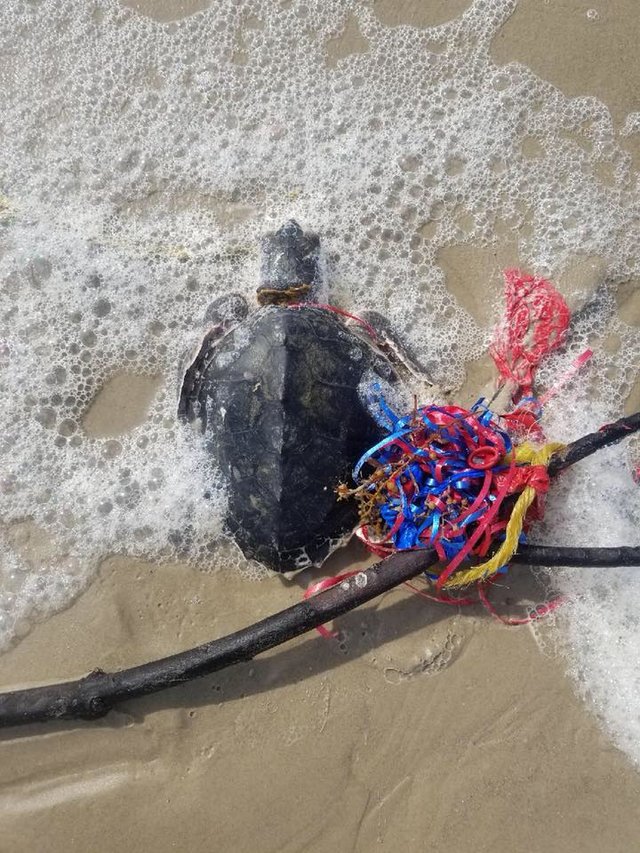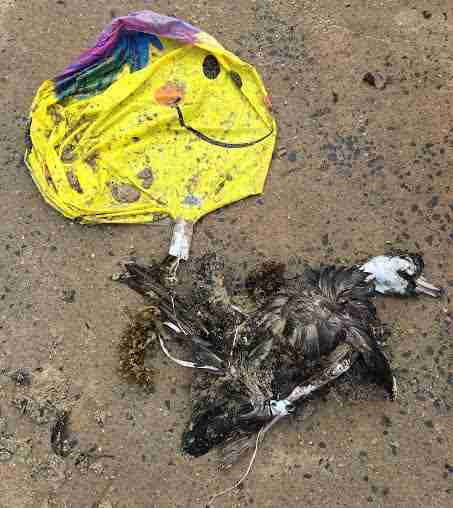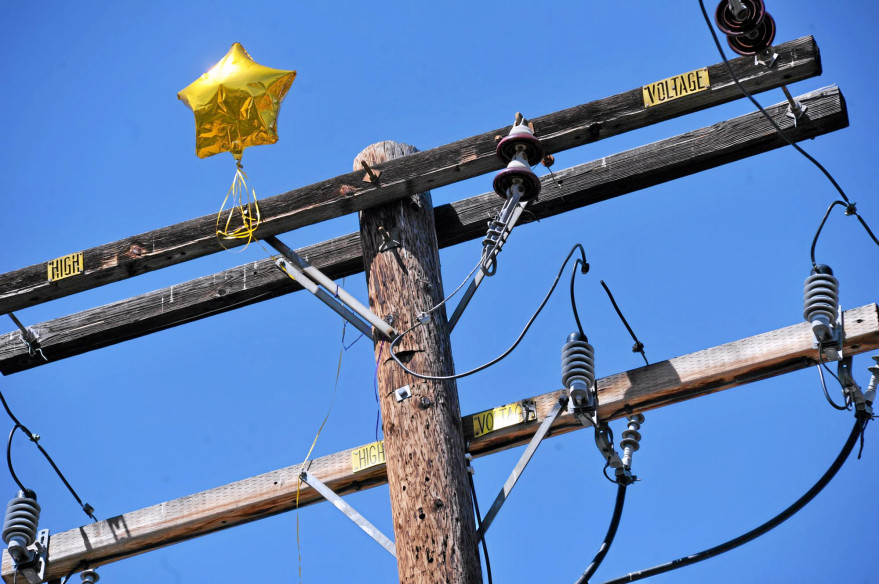The Problem
With shimmering colors and fantastic shapes, Mylar balloons can lift the spirits of any event. Be it a birthday, “Get Well Soon,” Graduation celebration or Valentine’s Day – receiving a Mylar balloon will undeniably put a smile on your face.
The problem is, Mylar balloons are horribly destructive. Virtually non-recyclable (see Recycling here), Mylar balloons contribute to the 8 million tons of plastic pollution that finds its way into the ocean EVERY YEAR. It’s one of the top three items removed from the Santa Barbara Channel—deadly to marine life and compounding the amount of debris in our local ocean.
Keep reading to learn more about why that brief smile from a Mylar balloon isn’t worth it.
1. Mylar balloons are plastic.

Photo courtesy of Santa Barbara Channelkeeper
What goes up, must come down– and all Mylar balloons come down as litter in our environment. Mylar and other plastics make up 60-90% of all marine debris in the ocean. Why does this matter? Pollution destroys the beauty of nature, impacts leisure activities and tourism, harms marine life, and it causes us to spend millions of dollars on ocean waste removal projects.
2. Mylar balloons are NOT biodegradable.
Mylar Balloons are not classified as biodegradable, as compared to natural latex balloons. Because Mylar and foil balloons are made of a polyester film and/or metal layer, it is considered trash and does not break down easily or naturally. After being in the ocean, these balloons can wreaks havoc on marine life.
3. Mylar balloons harm marine animals.

Photo courtesy of seaturtles.org
We know that plastic kills marine animals. Balloons, most notably, are commonly ingested by wildlife due to their attractive colors, and they cause intestinal issues and starvation. When foil balloons degrade, they lose their metallic finish and become clear. These, along with regular Mylar balloons, mimic the appearance of jellyfish and are frequently consumed by sea turtles, sharks and other animals. Moreover, the balloon strings can result in entanglement of marine life.

Photo courtesy of thedodo.com
4. Mylar balloons are NOT easily recyclable.
This is due to many reasons. First, it is extremely costly for this type of balloon to be recycled, and the flexible plastic often gets caught in the machinery, leading to expensive repairs. Additionally, in foil balloons, the metallized outer layer must be separated from the plastic layer before being remelted. This results in an energy intensive, expensive process, where most of the material ends up in the landfill anyway. Click HERE for more information on recycling Mylar.
5. Mylar balloons cause fires and power outages.
Mylar balloons covered in a thin layer of metal, otherwise known as foil balloons, cause problems on land as much as they do in the ocean. When this type of balloon floats into a power line or substation equipment, it causes a power surge that can short circuit the equipment and cause a spark leading to a fire, power outages and even injuries.

Photo courtesy of The Los Angeles Daily News

